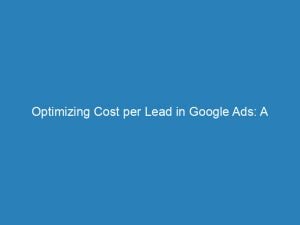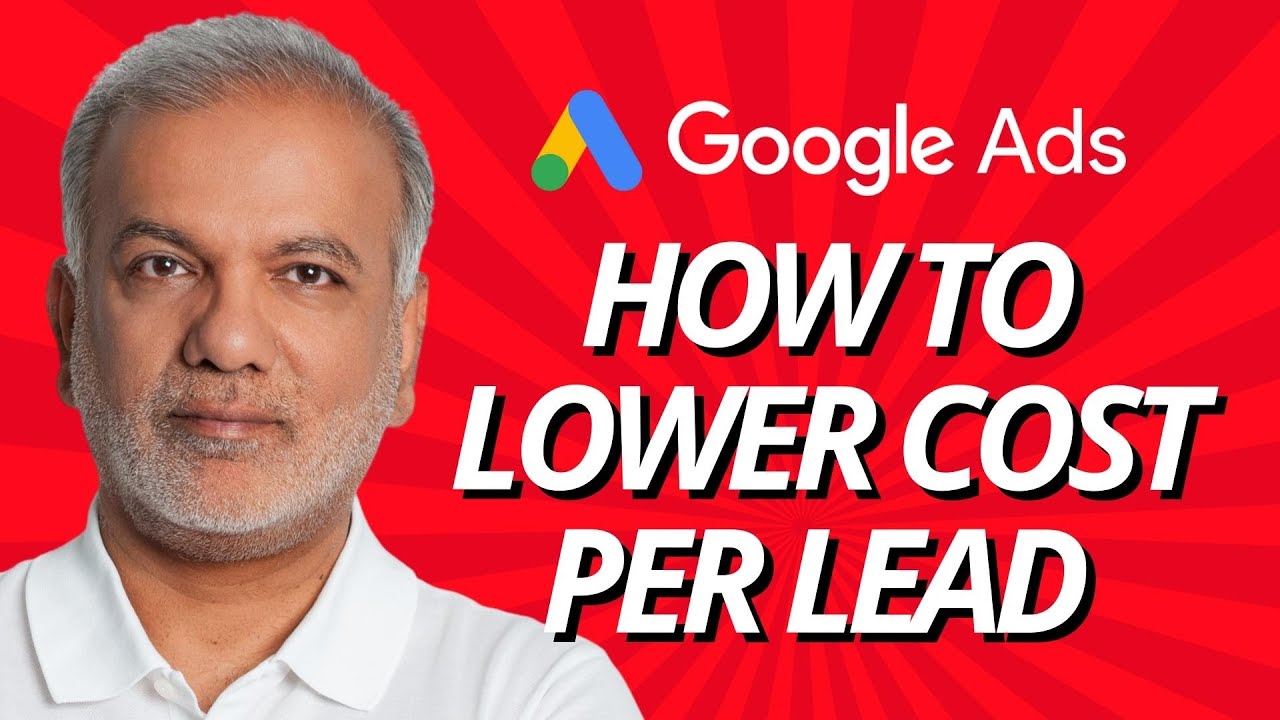Are you tired of spending a fortune on your Google Ads campaigns without seeing the desired results? The key to success lies in reducing your cost perlead.
In this digital age, it’s vital to target the right audience with ads that are not only relevant but also enticing. But how can you achieve this?
By optimizing your landing pages, testing different ad formats, and experiment with bidding strategies. That’s not all – you need to continuously monitor and refine your campaigns to ensure maximum performance.
Interested to learn more about how you can improve your campaign’s costperlead? Keep reading!
Table of Contents
costperlead google ads
The cost per lead in Google Ads can be optimized by employing various strategies. It is essential to improve ad relevance by utilizing targeted keywords and compelling ad copy.
Furthermore, optimizing landing pages for conversions and user experience can significantly impact the costper lead. Ad extensions can enhance ads and drive more conversions, while different bidding strategies should be experimented with to find the most cost-effective option.
Refining targeting based on demographics, interests, and behaviors can also reduce costs. Continuous monitoring and optimization of campaign performance, testing different ad formats, implementing remarketing campaigns, and benchmarking against industry averages are crucial for achieving a lower cost per lead.
Additionally, optimizing account structure and settings, along with improving Quality Score through ad copy, landing page, and keyword optimization, are important to consider. Allocating more budget to high-performing keywords, maintaining a negative keyword list, and optimizing landing pages through testing and refining elements are further strategies to reduce cost per lead.
Implementing proper conversion tracking, setting conversion values, adjusting bids and targets, and evaluating keyword performance are additional steps in managing cost per lead effectively. Finally, industry benchmarks and seeking assistance from Google Premier Partners can aid in budget determination and campaign planning for optimizing cost per lead in Google Ads.
Key Points:
- Employ various strategies to optimize cost per lead in Google Ads
- Improve ad relevance through targeted keywords and compelling ad copy
- Optimize landing pages for conversions and user experience
- Utilize ad extensions to enhance ads and drive more conversions
- Experiment with different bidding strategies to find the most cost-effective option
- Refine targeting based on demographics, interests, and behaviors to reduce costs
- Continuously monitor and optimize campaign performance, test different ad formats, and implement remarketing campaigns
Sources
https://fitsmallbusiness.com/google-ads-cost/
https://www.wordstream.com/blog/ws/2022/11/07/how-to-lower-cost-per-lead-google-ads
https://www.wordstream.com/blog/ws/2022/11/10/search-advertising-benchmarks
https://www.wordstream.com/blog/ws/2021/10/13/search-advertising-benchmarks
Check this out:
💡 Pro Tips:
1. Utilize ad scheduling to optimize for specific operating hours or geographies. This can help control costs and improve the efficiency of your campaigns.
2. Leverage audience targeting options, such as remarketing, to reach users who have already shown interest in your products or services. This can result in higher conversion rates and lower cost per lead.
3. Regularly review and adjust your campaign settings and targeting to avoid wasted spend. Analyze data and make necessary adjustments to ensure your ads are reaching the right audience.
4. Consider implementing ad rotation settings to test and refine different ad formats. This can help you identify the best-performing ad formats and improve your overall conversion rates.
5. Collaborate with Google Premier Partners to get expert assistance in budget determination and campaign planning. Their experience and knowledge can help you optimize your cost per lead and achieve better results.
1. Improve Ad Relevance With Targeted Keywords And Compelling Ad Copy.
Improving ad relevance is essential for driving high-quality leads that convert.
By using targeted keywords and compelling ad copy, you can capture the attention of your target audience and increase the likelihood of them clicking on your ads. Here are some strategies to implement:
Conduct thorough keyword research to identify relevant keywords that align with your target audience’s search intent. – Use keyword match types, such as exact match, phrase match, and broad match modifier, to control when your ads appear for specific search terms.
Write compelling ad copy that highlights the value proposition and encourages action. Use ad extensions, such as sitelinks and callouts, to provide additional information and entice users to click.
Regularly review and optimize your keyword list to ensure it remains relevant and aligned with your campaign goals. – Utilize tools like Google’s Keyword Planner and the Search Terms report to identify new keywords and negative keywords to optimize your campaigns further.
Use ad testing to experiment with different messaging and call-to-action to identify the most effective ad copy for generating leads. – Continuously monitor keyword performance and make necessary adjustments to maximize ad relevance and improve quality score.
2. Optimize Landing Pages For Conversions And User Experience.
An optimized landing page is crucial in converting leads generated from your Google Ads campaigns.
By focusing on conversions and user experience, you can improve your cost per lead and overall campaign performance. Here are some key considerations:
Ensure that your landing page aligns with the ad copy and provides a seamless transition for users. – Create a visually appealing and user-friendly design to enhance the overall experience.
Clearly communicate the value proposition and benefits of your product or service. – Use compelling headlines, subheadings, and bullet points to highlight key information.
Include a clear and prominent call-to-action that directs users to take the desired action. – Implement trust elements, such as customer testimonials and trust badges, to build credibility.
Optimize load time to avoid high bounce rates and improve user experience. – Conduct A/B testing to identify the most effective landing page elements and iterate for better conversions.
Implement proper conversion tracking to accurately measure the performance of your landing pages and optimize accordingly.
3. Use Ad Extensions To Enhance Ads And Drive Conversions.
Ad extensions are additional pieces of information that can be added to your ads to provide more context and encourage conversions.
By leveraging ad extensions effectively, you can enhance your ads and drive more leads. Here are some ad extensions to consider:
Sitelink extensions: Add additional links to specific pages on your website, allowing users to navigate directly to relevant sections. – Call extensions: Include a phone number with your ad, enabling users to call your business directly.
Location extensions: Display your business address and allow users to find your physical location. – Callout extensions: Add extra text to highlight key selling points and unique offers.
Structured snippet extensions: Showcase specific aspects and features of your product or service. – Promotion extensions: Highlight special offers or discounts to entice users to take action.
Price extensions: Display pricing information directly in your ads. – Use a combination of relevant ad extensions to provide users with more information and increase the chances of generating leads.
Regularly review and optimize your ad extensions to ensure they align with your campaign goals and drive conversions effectively.
Stay tuned for the next set of subheadings in the continuation of this article in Part 2…











